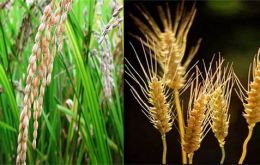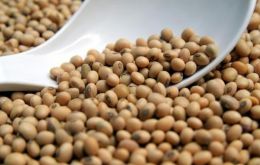MercoPress. South Atlantic News Agency
Tag: FAO Cereal Price Index
-
Monday, June 9th 2014 - 06:27 UTC
FAO Food Price Index down for the second consecutive month in May

The FAO Food Price Index was down for the second consecutive month in May, continuing its retreat from the 10-month high it experienced in March. Prices fell as generally ample supplies weighed on international prices for most commodities included in the Index.
-
Friday, December 13th 2013 - 08:52 UTC
FAO food price index in November unchanged: dairy up 23% over a year ago

The FAO Food Price Index averaged 206.3 points in November 2013, almost unchanged from the revised value of 206.6 points in October, but 9.5 points (4.4%) below its November 2012 value. A sharp decline in sugar prices last month nearly offset the rise in oils. Cereals averaged slightly lower but meat and dairy values were stable.
-
Saturday, November 9th 2013 - 17:55 UTC
Food commodity markets more balances and less price volatile, says FAO

Food commodity markets are becoming more balanced and less price volatile than in recent years thanks to improved supplies and a recovery in global inventories of cereals, according to FAO's Food Outlook report published on Friday.
-
Wednesday, March 20th 2013 - 08:22 UTC
FAO first wheat forecasts for 2013 anticipates second largest crop on record

First forecasts for the 2013 wheat harvest point to production increasing to 690 million tons, 4.3% up on 2012. This would be the second largest crop on record, according to the latest issue of FAO quarterly “Crop Prospects and Food Situation” report. The production hike is expected mostly in Europe, driven by increased plantings in response to high prices and a recovery in yields in some countries, notably the Russian Federation.
-
Thursday, October 4th 2012 - 19:52 UTC
FAO Prices Index up 1.4% in September pushed by dairy and meats

Following two months of stability, the FAO Price Index rose slightly in September 2012, up 1.4%, or 3 points, from its level in August. The Index, based on the prices of a basket of internationally traded food commodities, climbed to 216 points in September from 213 points in August.
-
Friday, September 7th 2012 - 06:25 UTC
FAO says global food prices remained steady in August, but “the game is not over”

Global food prices remained steady in August, the United Nations food agency said Thursday, but warned that “the game is not over” as it was only the beginning of the harvest season.
-
Monday, March 19th 2012 - 15:44 UTC
FAO Food price index rose 1% in February but is 10% below a year ago

The FAO Food Price Index rose 1% or 2.4 points from January to February. The Index climbed nearly 2% in January – its first increase in six months. The February increase was mostly driven by higher prices of sugar, oils and cereals while dairy prices fell slightly after a marked rise in January.
